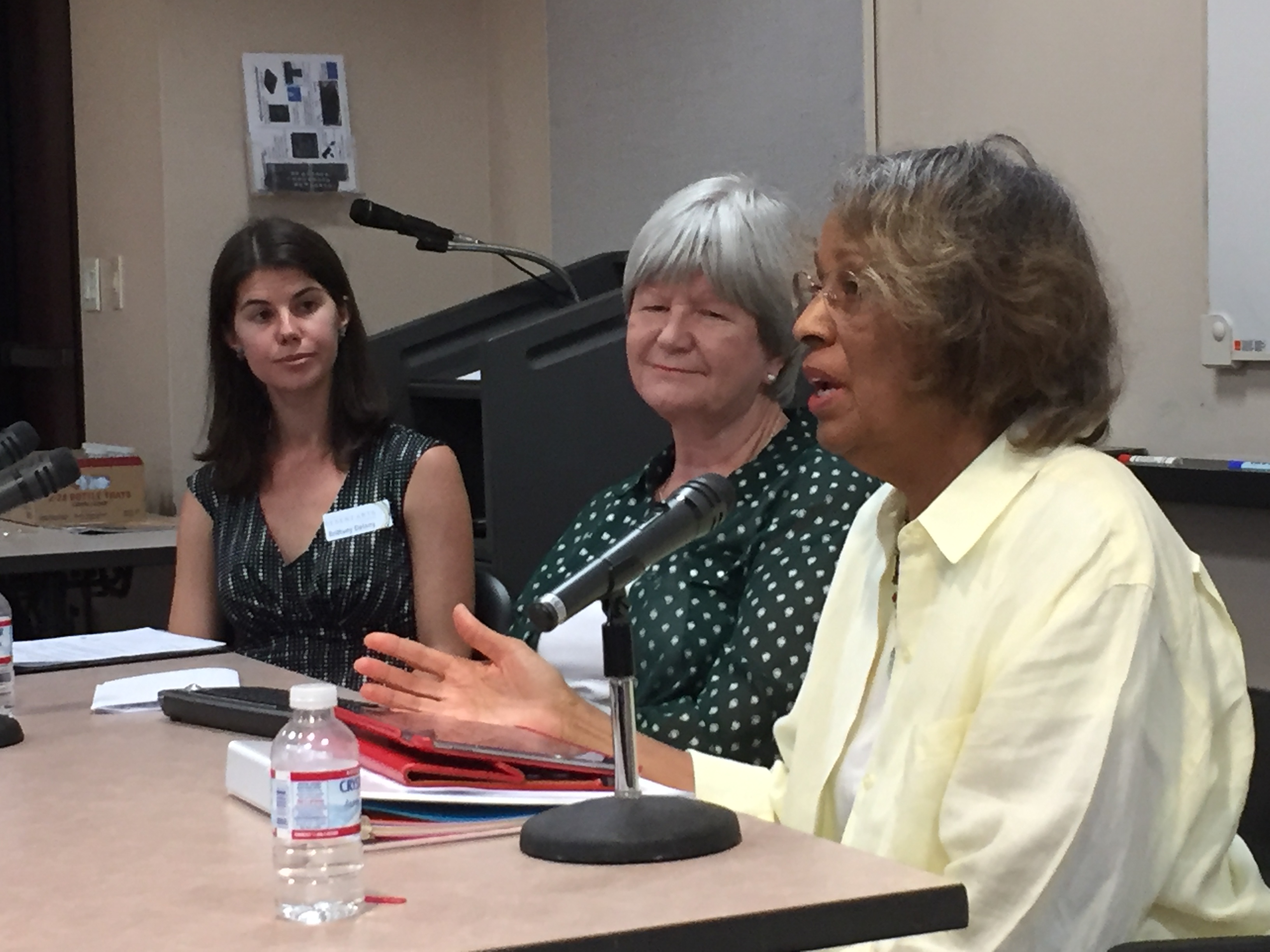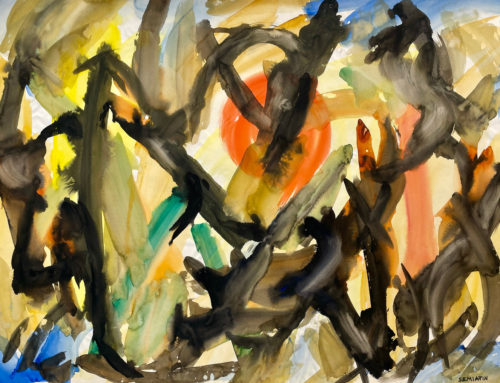There’s a lot of money out there for artists and arts organizations. If you want some of it, you need a plan. Three experts on the topic — grant writer Leigh Wiemann, arts administrator Brittany Delany, and artist Barbara Gothard — shared their best advice July 20 during an arts salon hosted by the City of Cathedral City. DOWNLOAD TIP SHEET
The program, How to Find and Pursue Arts Grants, presented by California Desert Arts Council, drew more than 60 participants. Afterward, many enjoyed a private viewing of The Sioux Wars, an exhibition of photography by David Frances Barry continuing through Labor Day at the city’s new community gallery adjacent to City Hall.
The workshop wasted no time getting to the prevailing concern among visual and performing artists and arts administrators who attended: how to get started.
“I suggest beginning with your budget,” said Wiemann, a longtime grant writer for Palm Springs Art Museum and the workshop’s first presenter. “It will save you time and anguish down the road. It’s your time to double check your project design to see if it will take you where you want it to go, and reveal whether the amount you have in mind is enough to complete your project.”
Next comes the daunting task of searching for grant opportunities to suit your specific project. “The four general funders are foundations, corporations, state agencies, and the federal government,” Wiemann said, adding the reliability of the latter source, which includes the NEA, remains uncertain under the Trump administration. “Corporations are looking for marketing; they support events and programs that get publicity. Most corporate foundations have grant portals.”
Wiemann suggested investing time at the Foundation Center website, particularly its Philanthropy News Digest section. The California Desert Arts Council website also lists grants and tools. You can also follow arts grants trends and research via blogs such as Americans for the Arts blog, Barry’s Blog (Western States Arts Federation), and Fractured Atlas blog.
“Research is so crucial,” said Gothard, a PSAM Artists Council board member and former educator and business executive who returned to art with the help of grants from the Kenneth A. Picerne Foundation’s Artist Outreach Project and Institut Calvisson in France. “Talk to your friends. A lot of people have already gone through the research process. My alumni associations were a good source for grants. Many of the alumni worked in organizations that awarded grants. You need to know what they’re looking for.”
The next decision is whether to write the grant or hire a grant writer to help you. Before you decide, Wiemann suggests considering how much you enjoy writing and whether the proposal seems too difficult to go it alone. “If you hire a grant writer, hire on a project, rather than a per-hour basis,” she said. “And ask the grant writer to develop a template you can modify and use for other submissions.”
Delany, who shared her experience of winning a capacity-building grant for an arts organization, suggested reading up on the grantor’s previous awards. “Understand what they’re looking for, who they want to partner with, and where they invest their money,” she said. “It’s important for the grantor to know who’s benefitting, who does it touch.”
Delany also advised participants to watch Shark Tank as well as crowdfunding campaign videos on Kickstarter.com and Indiegogo.com to see and hear “how passionate people can persuade funders to support their work.”
Gothard added, “They key is answering [the grantor’s] questions specifically. Don’t over promise. These people are sophisticated grant reviewers. They know what’s doable in a period of time.” And then edit to death. “Some applications have a word limit, which helps you focus and become more concise with what you’re saying.”
Once you’ve won a grant, your next concern is stewardship. “Think of a grant as a job,” said Gothard, who conceded she was surprised by the amount of paperwork and reporting the grant required. “That’s what you’re being paid to do. I had one grant that required a monthly report, with expenses, as well as the final report.”
Wiemann asserted the reporting is as important as the initial proposal. She also imparted the importance of developing good relationships with the people involved in the grant process. They can offer feedback and a point person for the next time you want to apply for funding.
“After I won the first grant for research with my professor and colleague, we produced documentation and artwork, as promised,” Delany said. “Then, with that completed work, we were able to iterate another project for grant support. Following that, we requested funds for an expanded artwork project, and the following year, we requested funding for bringing on a creative designer. Bottom line: if you show your funders you can be responsible with their money — delivering on your promise, fulfilling the mission, and completing the final report — they are more likely to consider your future proposals. The goal is to develop real trust and respect with your grantor so they have confidence in your ability to execute your vision, whether that’s a bold new art project, or a 10-year plan to build a new multimedia arts space.”
Lastly, if a funder declines your grant award, be professional and don’t take it personally, Wiemann said. “Keep writing, keep looking. If you don’t apply, you won’t get a grant.”
Photo (left to right): Brittany Delany, Leigh Wiemann, and Barbara Gothard.







